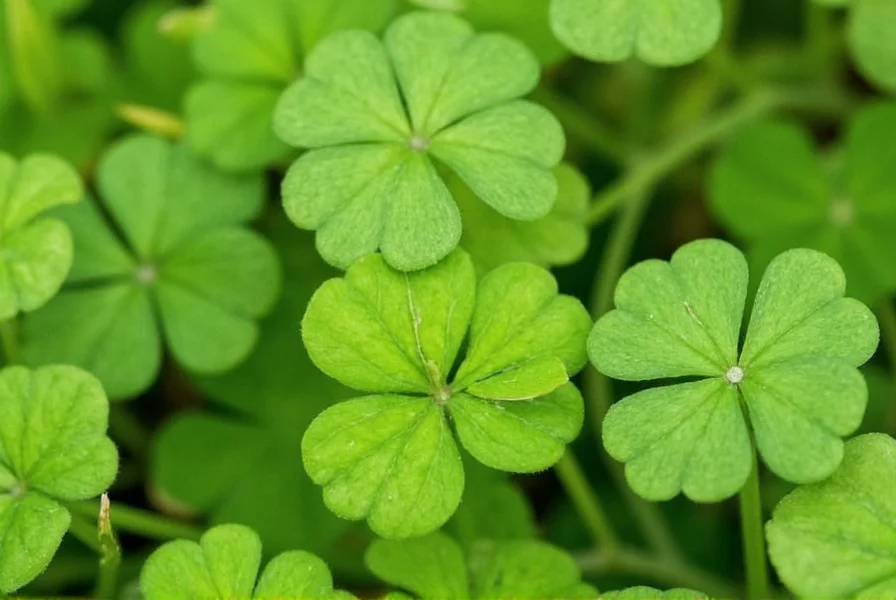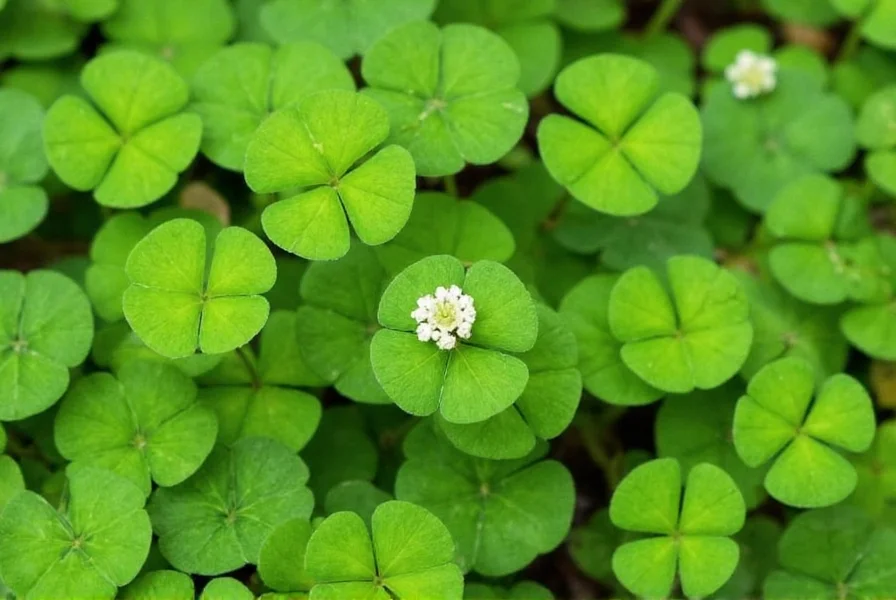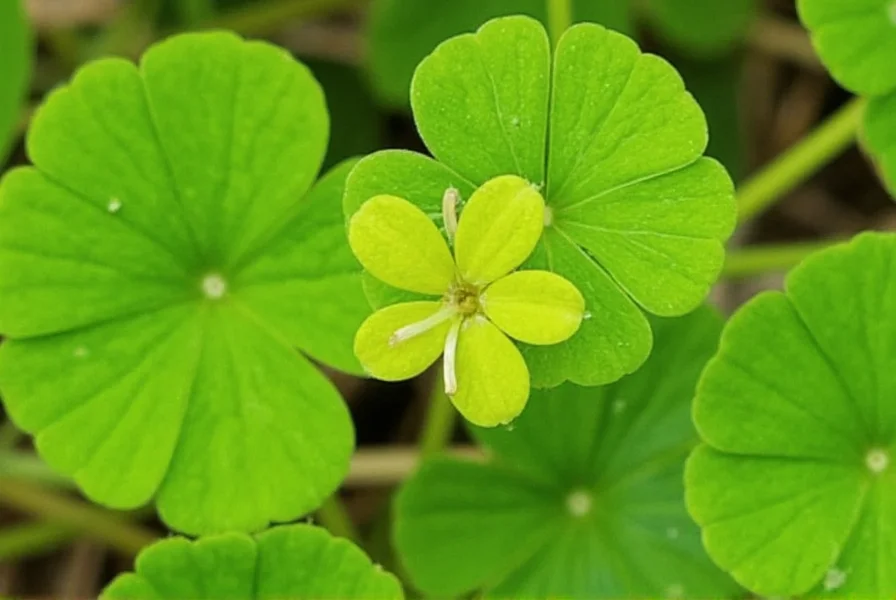Understanding this fragrant plant begins with recognizing its unique botanical characteristics. Lemon clover belongs to the Melilotus genus and features trifoliate leaves similar to other clovers, but with a distinctive lemon aroma released when leaves are bruised. This characteristic scent comes from coumarin compounds that become more pronounced when the plant dries.
Botanical Classification and Physical Characteristics
Lemon clover (Melilotus officinalis) is often confused with other clover varieties but has several distinguishing features. The plant typically grows 3-5 feet tall with erect, branched stems. Its leaves consist of three oval leaflets with finely toothed edges, and the flowers form elongated clusters of small, yellow blossoms that bloom from late spring through summer.
| Feature | Lemon Clover | White Clover | Red Clover |
|---|---|---|---|
| Height | 3-5 feet | 4-12 inches | 12-20 inches |
| Flower Color | Yellow | White | Pink to purple |
| Fragrance | Lemon/coumarin scent | Mild | Sweet |
| Leaf Edges | Fine teeth | Smooth | Smooth |
Habitat and Growing Conditions
When exploring how to identify lemon clover in natural settings, understanding its preferred habitat is essential. This resilient plant thrives in disturbed soils, along roadsides, in fields, and on waste ground. It prefers full sun but tolerates partial shade and grows best in well-drained soils, though it can adapt to various soil types including poor, rocky, or sandy conditions.
Gardeners interested in growing lemon clover should note that it's a biennial plant, completing its life cycle over two years. In the first year, it develops a deep taproot and low-growing rosette of leaves. During the second year, it sends up flowering stalks, produces seeds, and then dies. The plant's extensive root system helps fix nitrogen in the soil, making it valuable for soil improvement.

Identification Tips for Lemon Clover vs Similar Species
Accurate identification of lemon clover requires attention to specific details that distinguish it from other Melilotus species and true clovers. The most reliable method for how to identify lemon clover plants involves checking for the characteristic lemon scent when leaves are crushed. Additionally, examine the flower structure—lemon clover has small, pea-like yellow flowers arranged in elongated racemes.
When differentiating lemon clover from yellow sweet clover (which is actually the same plant with regional naming variations), note that both refer to Melilotus officinalis. The confusion often arises because some regions use "sweet clover" as the primary name while others emphasize the lemon scent aspect. True identification requires botanical examination rather than common names.
Ecological Benefits and Practical Applications
The benefits of lemon clover for pollinators make it ecologically valuable despite sometimes being classified as a weed. Its flowers provide nectar for bees and other beneficial insects throughout the summer months. In agricultural settings, farmers sometimes use lemon clover as a cover crop due to its nitrogen-fixing properties and ability to improve soil structure with its deep taproot.
Historically, traditional uses of lemon clover included medicinal applications, though modern practitioners exercise caution due to coumarin content. Some gardeners incorporate lemon clover into herbal tea blends for its subtle flavor, but proper identification is crucial since it resembles potentially toxic plants like poison hemlock in its early growth stages.
Growing Lemon Clover in Home Gardens
For gardeners considering growing lemon clover in home gardens, direct seeding works best as the plant develops a deep taproot that doesn't transplant well. Scatter seeds in prepared soil in early spring or fall, pressing them lightly into the surface since they require light for germination. Keep the soil moist until established, then the plant requires minimal care.
While lemon clover can self-seed readily, it's generally not invasive in garden settings. However, in some regions it may naturalize in wild areas, so check local regulations before planting. The plant's ability to thrive in poor soils makes it suitable for challenging garden spots where other plants struggle.

Safety Considerations
Understanding the safety profile of lemon clover is essential before using it for culinary or medicinal purposes. The coumarin content gives the characteristic scent but can be problematic in large quantities. When the plant wilts or spoils, coumarin can convert to dicoumarol, which affects blood clotting. For this reason, consumption should be limited and avoided by individuals taking blood-thinning medications.
Proper identification remains critical, as lemon clover bears some resemblance to toxic plants like poison hemlock, especially in its first-year growth stage. Always consult with a qualified botanist or herbalist before consuming any wild plant.
Conclusion
Lemon clover represents a fascinating intersection of ecology, botany, and practical gardening. Whether you're identifying lemon clover in the wild, considering it for soil improvement, or simply appreciating its role in supporting pollinators, understanding its characteristics helps foster appreciation for this often-overlooked plant. Its distinctive lemon scent, ecological benefits, and historical significance make it worthy of attention beyond its sometimes-dismissive "weed" classification.
Is lemon clover the same as yellow sweet clover?
Yes, lemon clover and yellow sweet clover refer to the same plant species (Melilotus officinalis). The different names reflect regional variations and emphasis on either its lemon-like scent or sweet fragrance. Both names describe the same biennial plant with yellow flowers and trifoliate leaves.
Can you eat lemon clover flowers and leaves?
Lemon clover has been used in traditional herbal preparations, but consumption requires caution. The coumarin content can be problematic in large quantities, and spoiled plant material may contain dicoumarol, which affects blood clotting. Consult a qualified herbalist before consuming, and avoid if taking blood-thinning medications.
How do you properly identify lemon clover in the wild?
Proper identification involves checking for trifoliate leaves with finely toothed edges, yellow flower clusters, and the distinctive lemon scent when leaves are crushed. Examine the entire plant structure, including the deep taproot. Be cautious not to confuse it with toxic plants like poison hemlock, which has different leaf structure and no lemon scent.
Is lemon clover beneficial for bees and other pollinators?
Yes, lemon clover provides significant benefits for pollinators. Its flowers produce nectar that attracts bees, butterflies, and other beneficial insects throughout the summer months. The extended blooming period makes it valuable for supporting pollinator populations when other food sources may be scarce.
Does lemon clover improve soil quality in gardens?
Yes, as a legume, lemon clover fixes nitrogen in the soil through its root system, improving soil fertility. Its deep taproot also helps break up compacted soil and improves soil structure. Gardeners sometimes use it as a cover crop for these soil-enhancing properties before planting other crops.











 浙公网安备
33010002000092号
浙公网安备
33010002000092号 浙B2-20120091-4
浙B2-20120091-4